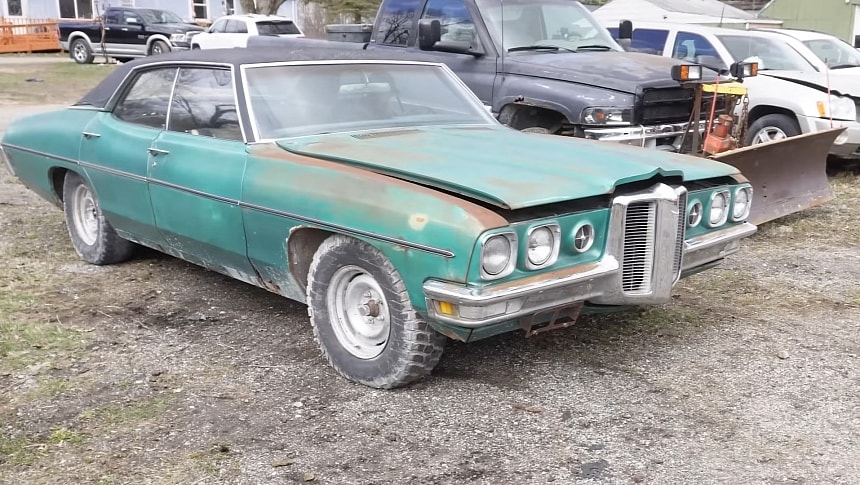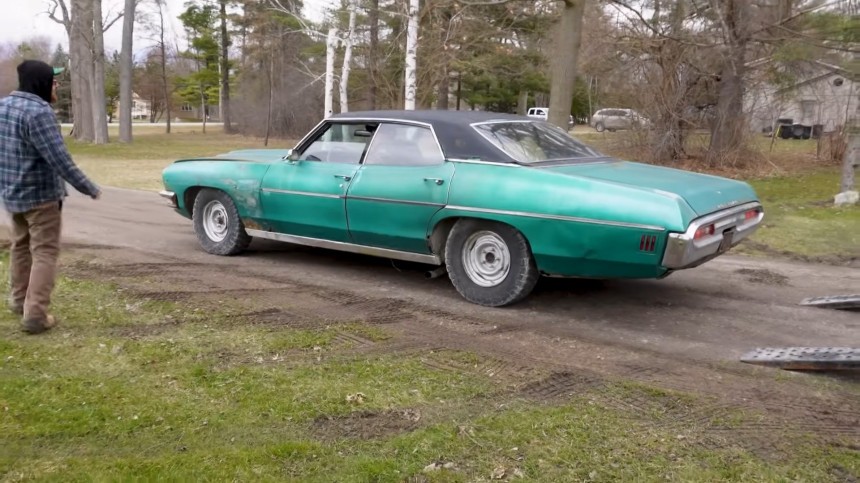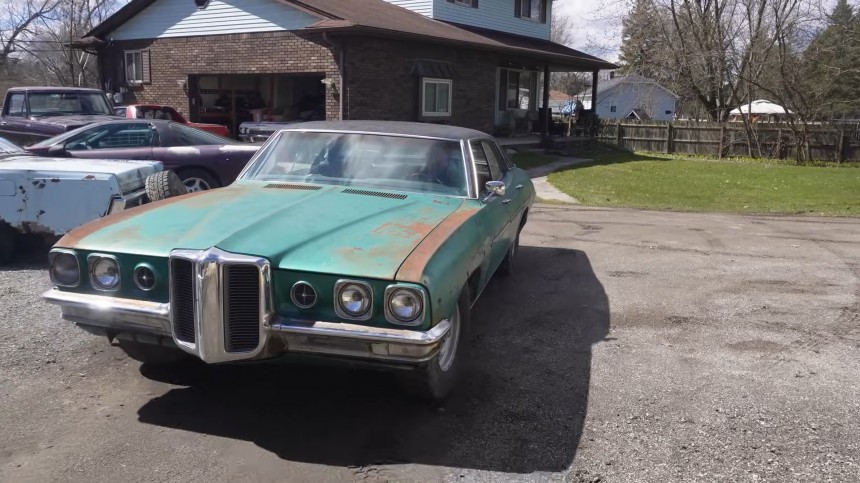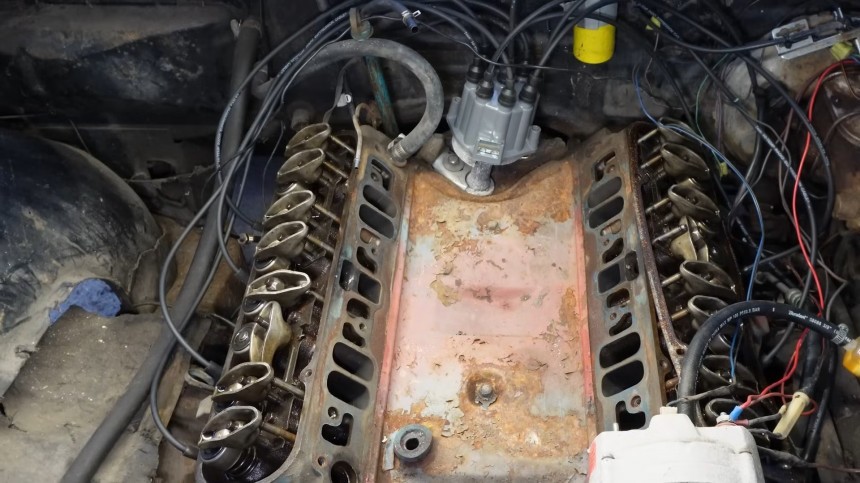Out of almost 691,000 cars assembled during the 1970 model year, the Catalina was Pontiac’s best-seller by far, with nearly one-third of total production on its nameplate. The Catalina was produced from 1950 to 1981, first as a trim level and then as a standalone model, beginning with the 1959 production year.
Although the Pontiac of the sixties will forever be associated with the iconic GTO that sparked a motoring revolution (still in progress, in various forms), the muscle car wasn’t nearly as popular as its fame would lead to believe. In fact, the full-size Catalina deserves a standing ovation and an at-arms salute for its contribution to the success of its mid-size street brawler. And, in a way, it got that recognition in full.
Buyers appreciated it to such an extent that even when the GTO was the talk of the day, the Catalina outsold the muscle car more than three to one. The full-size Poncho remained consistent in production numbers throughout the entire decade of the sixties, and more than 2.5 million customers opted for one. That’s more than 200,000 cars sold every year between 1960 and 1970.
After 1970, however, the enthusiasm began to wane, and average sales figures dropped dramatically below 200,000 units a year. In fact, with the exception of the first four years of the eighth decade, the Catalina never made it past the 100,000-vehicle milestone.
The vast assembly volumes make the nameplate quite a frequent resident of junkyards nowadays, unfortunately. However, not all is lost, at least not as long as classic car enthusiasts still roam our beloved Planet Piston (by the way, did you know that Earth is the only known planet that holds internal combustion?).
Anthony & Josh, the YouTubers behind the Red Head Garage channel, got a 1970 four-door hardtop example dropped at their local scrapyard in Michigan. Within 24 hours, the car was in their possession – sometimes, it does pay to befriend the boneyard management. Why it ended up in the crusher's waiting room is of little importance, but I suspect it might have something to do with its mighty five-cylinder V8. Confused? Play the video and watch the revival in detail (sort of).
Let’s go over that phrase one more time: the big Poncho was born with a small eight-piston engine – the smallest in the full-size Pontiac lineup in 1970 – but not all of them were banging right when the merry mechanics found it. Three hundred fifty cubic inches (that had nothing to do with sister division Chevrolet’s famous small-block) was the standard motor for the Catalina that year.
It could be ordered only in the Catalina, as a matter of fact – the other big automobiles from PMD opened with a 400-cube V8 (the Executive and the Grand Prix). At the same time, the Bonneville offered the big 455 as regular equipment.
The Catalina was the entry-level in the full-size line and the only one powered by the 5.8-liter motor. If the imperial to metric conversion doesn’t match, it’s the Pontiac marketing department’s fault. The 350 cubic inches advertised in the brochures measured precisely 3.875 x 3.75 inches (bore and stroke – 98.425 x 95.25 mm), resulting in a total cylinder volume of 353.8 cubes, or 5,798 liters. (Chevy played the same trick with their 402-cube (6.6-liters) ‘396’ big-block that debuted in 1970).
This Catalina was the cheapest, with the no-cost, no-frills V8 producing 255 horsepower and 355 lb-ft (258 PS, 481 Nm). The transmission in this car is the trusty Hydra-Matic three-speed automatic, which would lead us to believe that the vehicle sports a 2.93:1 rear (the only gearing offered by the factory for this particular engine-gearbox combo).
Previous owners probably deemed this rough Catalina solid enough for gravel roads and fitted it with a set of off-road tires. However, that’s not the issue with the five-cylinder eight-banger: several pushrods and hydraulic tappets left the chat at some unspecified point after the engine had garnered enough road experience to go around the Equator six and a half times.
The odometer reads 63,750 miles (102,595 km), but the staggered positioning of the digits and the pedal wear led the YouTubers to conclude that the milometer has rolled over. Not that it would matter much because the engines of the era are easy to fix (if you know what you’re doing). This Catalina refused to run after three of its cylinders were left without the services of their valves’ pushrods.
The nuts on the rocker arms went loose and you can see what happened in the gallery. However, the good news is that parts are cheap and easy to find, so it takes less than $100 worth of investment to get this big Pontiac back on the road. Alright, if we add the intake manifold, which the vloggers replaced out of fad rather than because they needed to, then the total budget for this repair is under two hundred bucks.
Buyers appreciated it to such an extent that even when the GTO was the talk of the day, the Catalina outsold the muscle car more than three to one. The full-size Poncho remained consistent in production numbers throughout the entire decade of the sixties, and more than 2.5 million customers opted for one. That’s more than 200,000 cars sold every year between 1960 and 1970.
After 1970, however, the enthusiasm began to wane, and average sales figures dropped dramatically below 200,000 units a year. In fact, with the exception of the first four years of the eighth decade, the Catalina never made it past the 100,000-vehicle milestone.
Anthony & Josh, the YouTubers behind the Red Head Garage channel, got a 1970 four-door hardtop example dropped at their local scrapyard in Michigan. Within 24 hours, the car was in their possession – sometimes, it does pay to befriend the boneyard management. Why it ended up in the crusher's waiting room is of little importance, but I suspect it might have something to do with its mighty five-cylinder V8. Confused? Play the video and watch the revival in detail (sort of).
Let’s go over that phrase one more time: the big Poncho was born with a small eight-piston engine – the smallest in the full-size Pontiac lineup in 1970 – but not all of them were banging right when the merry mechanics found it. Three hundred fifty cubic inches (that had nothing to do with sister division Chevrolet’s famous small-block) was the standard motor for the Catalina that year.
It could be ordered only in the Catalina, as a matter of fact – the other big automobiles from PMD opened with a 400-cube V8 (the Executive and the Grand Prix). At the same time, the Bonneville offered the big 455 as regular equipment.
This Catalina was the cheapest, with the no-cost, no-frills V8 producing 255 horsepower and 355 lb-ft (258 PS, 481 Nm). The transmission in this car is the trusty Hydra-Matic three-speed automatic, which would lead us to believe that the vehicle sports a 2.93:1 rear (the only gearing offered by the factory for this particular engine-gearbox combo).
Previous owners probably deemed this rough Catalina solid enough for gravel roads and fitted it with a set of off-road tires. However, that’s not the issue with the five-cylinder eight-banger: several pushrods and hydraulic tappets left the chat at some unspecified point after the engine had garnered enough road experience to go around the Equator six and a half times.
The nuts on the rocker arms went loose and you can see what happened in the gallery. However, the good news is that parts are cheap and easy to find, so it takes less than $100 worth of investment to get this big Pontiac back on the road. Alright, if we add the intake manifold, which the vloggers replaced out of fad rather than because they needed to, then the total budget for this repair is under two hundred bucks.









































































